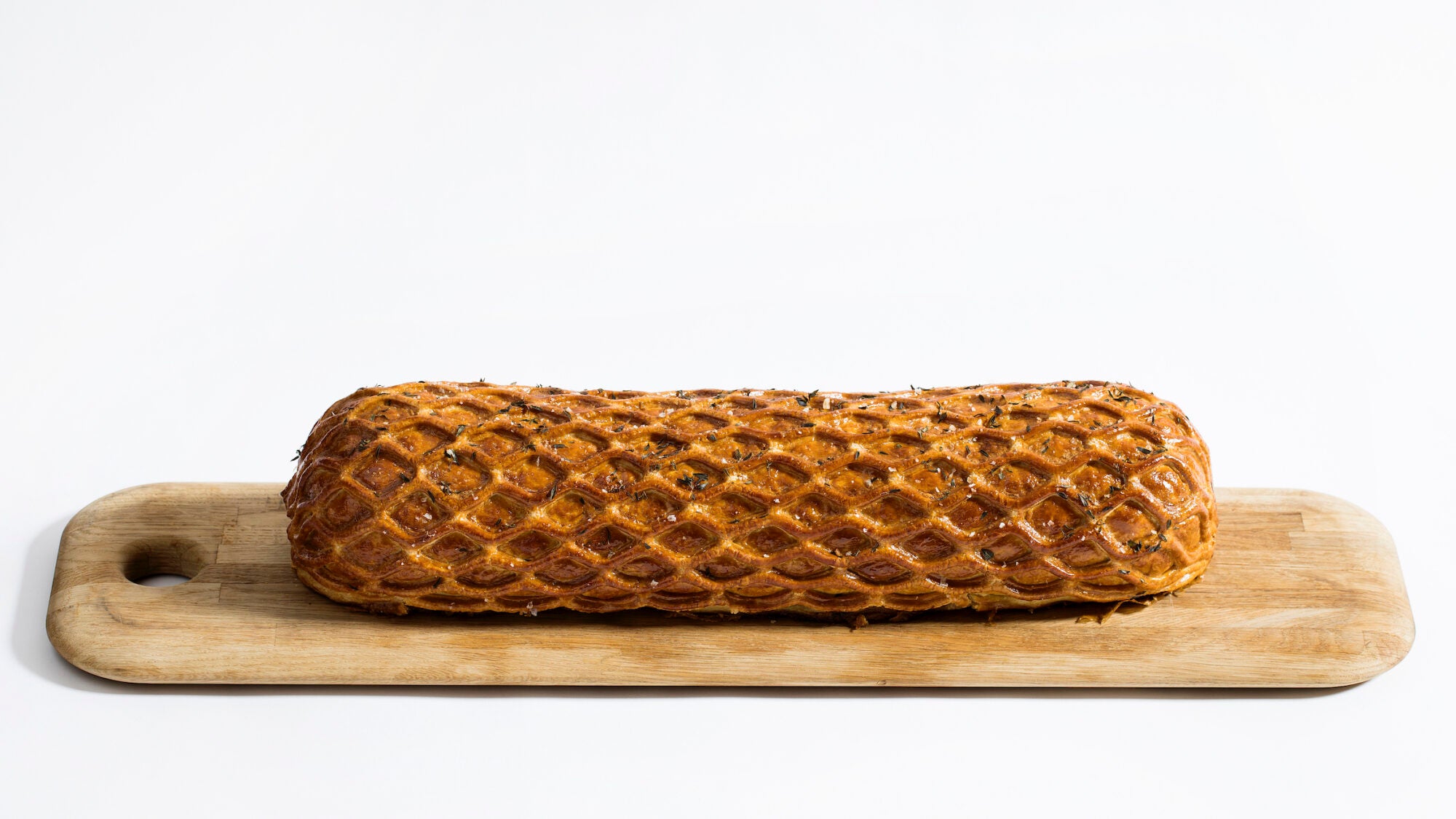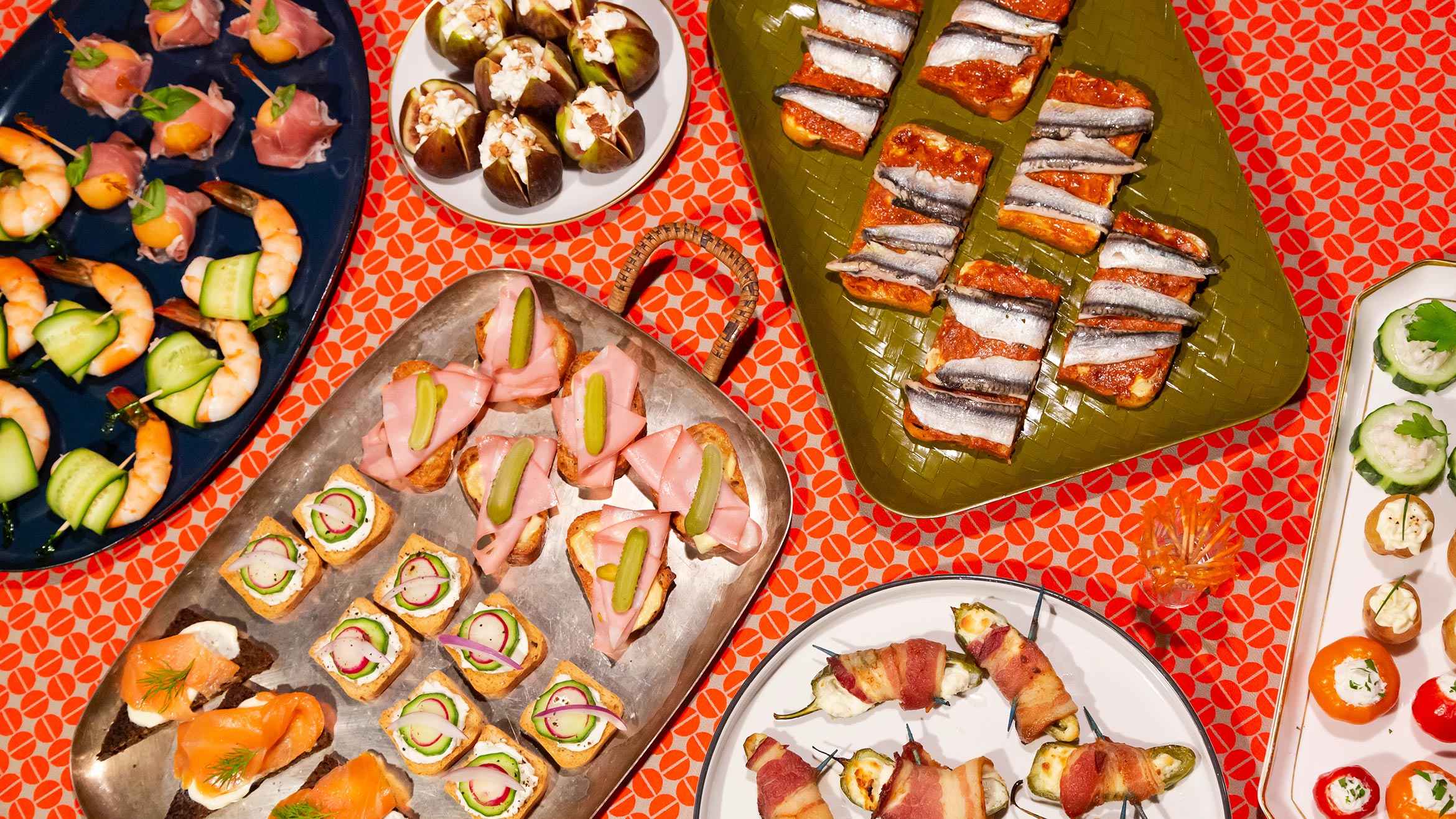
When it comes to beef Wellington, savory tarts with perfectly golden crust, and flashy canapés, many professional chefs just reach for the store-bought puff.
When added to any cooking equation, puff pastry brings the party. It’s the crux of extravagant dishes with poetic and fanciful titles like vol-au-vent (“gust of wind”) and mille-feuille (“thousand-sheets”). An extra layer of special that puffs and shines and brings your dish—and with it, your shindig—to life. You might think pulling off something as light as a gust of wind is out of your grasp, but rest assured, even the professionals working behind the scenes at the fanciest of restaurants use the frozen stuff.
So what is puff pastry exactly? It’s a laminated dough, meaning it’s made by stacking (laminating) myriad sheets of dough and lining the layers with butter. The effect, as you know: crispy, flaky bliss. Making puff by hand is a triumph involving countless steps of rolling and folding with hours of chilling between each “turn” to keep the butter dutifully in its place. It’s next to impossible to get right. And typically, that’s just the start, as puff pastry is usually one element of a complex dish. So, if you can save yourself a step and the worry of an added variable, why not take the leg up?
John Denison, who serves elegant and unfussy French classics at Portland restaurant St. Jack, says making puff pastry “comes with a huge time investment” and opts to outsource 99 percent of the puff he serves. He fell in love with fresh puff pastry while traveling in the South of France, wading through markets overflowing with galette des rois and learning the art of sea bass en croûte from three-Michelin-star chef Michel Guérard. When re-creating these famous dishes back home, though, Denison finds the only practical way is to buy the pastry. He works with a local bakery to keep up with the high-volume demands of the restaurant, but Dufour is an excellent retail option, as are Trader Joe’s seasonally available sheets.
Denison cautions that some store-bought puff is made with vegetable shorting, lacking the rich taste of real butter. But butter’s flavor is not the only reason to check the package’s label: the small amount of water that butter contains (and vegetable shortening does not) is what makes puff puff. As the pastry bakes, the water suspended between its gossamer sheets creates steam, which puffs up those impossibly light layers. Vegetable shortening lacks the structure that butter provides as well, often resulting in a much less dramatically puffed pastry and one that can lean toward soggy and greasy, not crisp and buttery.

For me, anything wrapped in pastry immediately creates an exciting, theatrical presentation: It’s crusty, shiny, ornate. While puff is great shellacked in apple caramel as a tarte Tatin or packed with currants in the form of a chubby Eccles cake, it really shines in epic savory presentations like Guérard’s whole fish wrapped in the stuff—and pastry-wrapped fish is within reach even if you’re not a three-star chef. Coauthor of Wine Food and The Picnic Andrea Slonecker suggests salmon en croûte as an elegant and deceptively simple way to impress your friends: “It looks fancy but is quite easy to make using frozen puff.”
Slonecker opts for the frozen variety “because it’s an easy and quick way to make a crust when I’m craving a crusty thing.” Amen. She buys sheets of frozen puff from a local bakery, which is a great (and painless) way to get your hands on some top-quality all-butter pastry. She keeps it around for ad hoc desserts, quiches, and savory tarts; see “crusty things.”
Handling puff pastry, whether you’ve made it yourself or not, is its own project. Temperature and timing are everything, so don’t feel like you copped out too much by buying it. Keep your puff pastry frozen until the day before you plan to use it, and defrost it slowly in the refrigerator overnight to avoid disturbing the delicate balance of suspended butter, which can be thrown off if the dough rests for too long at room temperature.
Once defrosted, roll the pastry gently to even its thickness and breathe some life back into the dough. Be sure to brush off any excess flour—this will help to create a sturdy seal when connecting pieces and get you closer to a glossy, bejeweled surface. When you’re cutting the pastry, keep it cold, and use a sharp knife to ensure you cut through the layers instead of smooshing them together, promoting an even rise.
Brushing the surface with egg before baking is a crucial step when a glossy surface is what you’re after, but a rich professional surface is achieved post-bake. As always, sugar is the secret. Brush the still-hot surface of your just-baked puff with a thin coat of maple or simple syrup to get a glossed shine that will set into a crackly veneer as it cools. Don’t shy away from glossing up your savory pastries, too. The thin coat will supply the shattering crisp you’re after, but it won’t offset the balance of your savory flavor profile.
Some Ideas for Puffing in Style:
- Martha Stewart knows how to throw a party, and she has a dead-simple approach to trout en croûte.
- Wrap a fish in pastry, like Wolfgang Puck does for the Oscars.
- London-based cookbook author Anna Jones tops her pastry with eggs and springy vegetables.
- Becky Duffett adapted British pie whisperer and self-proclaimed “pastry deviant” Calum Franklin’s Welly recipe for TASTE.
- Julia Moskin proves that store-bought puff is up to the task of a tarte Tatin.
- Punctuated with currants, Eccles cakes are a fantastically British pastry from the authority on all things fantastically British, Fergus Henderson.
- This recipe from Los Angeles legend Josef Centeno shows you just how simple it is to turn a sheet of frozen puff into an epic tomato tart.
Lead image: John Carey. Second image: Rachel Cabitt